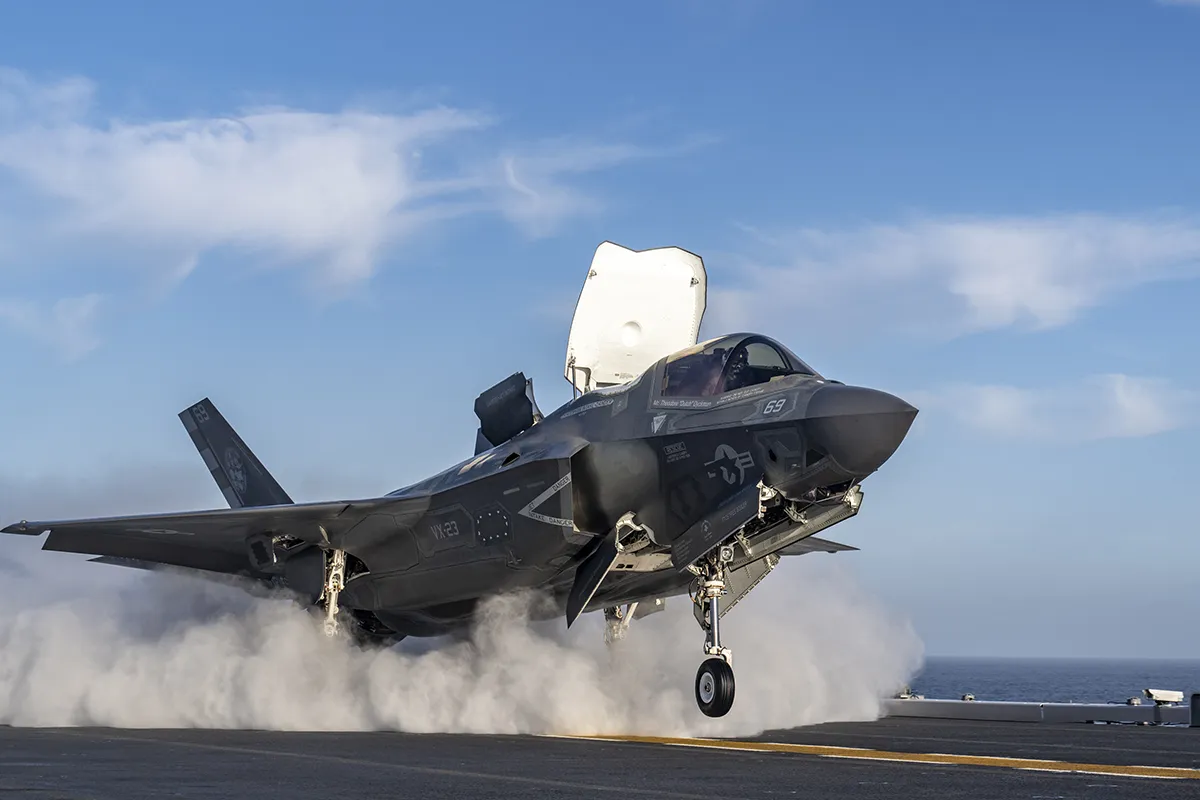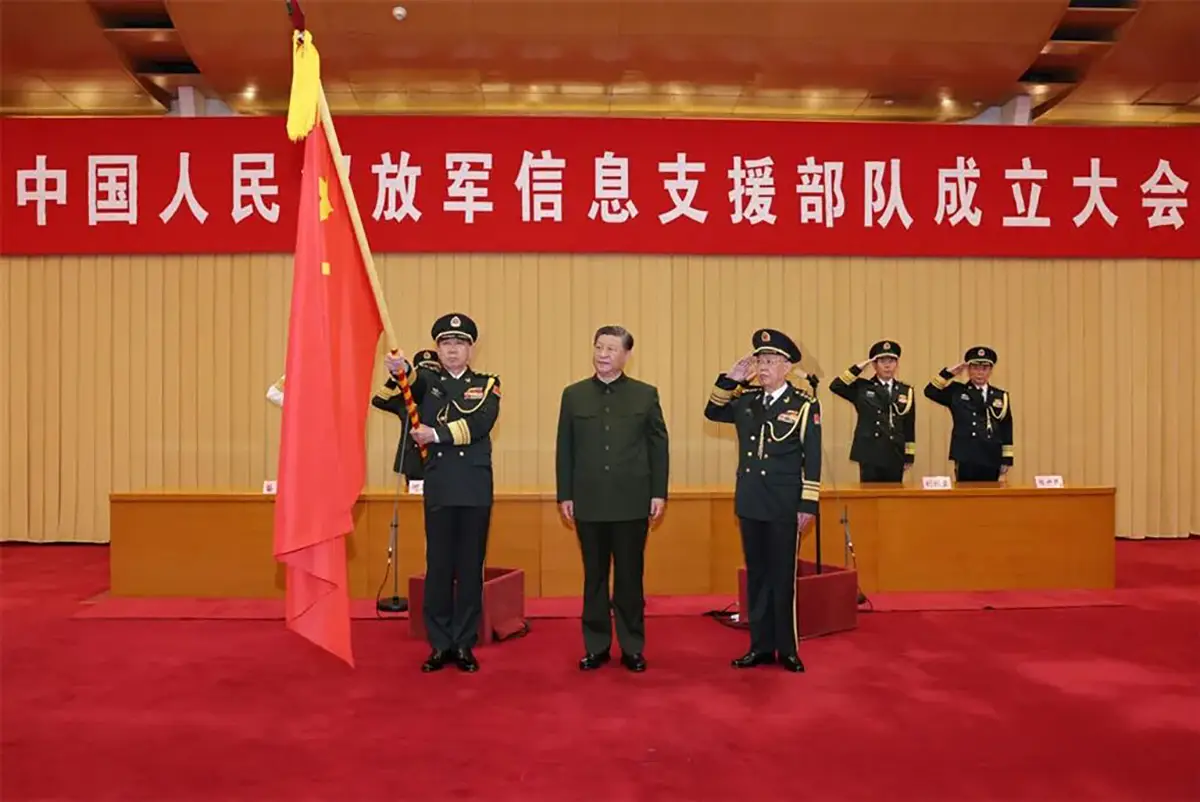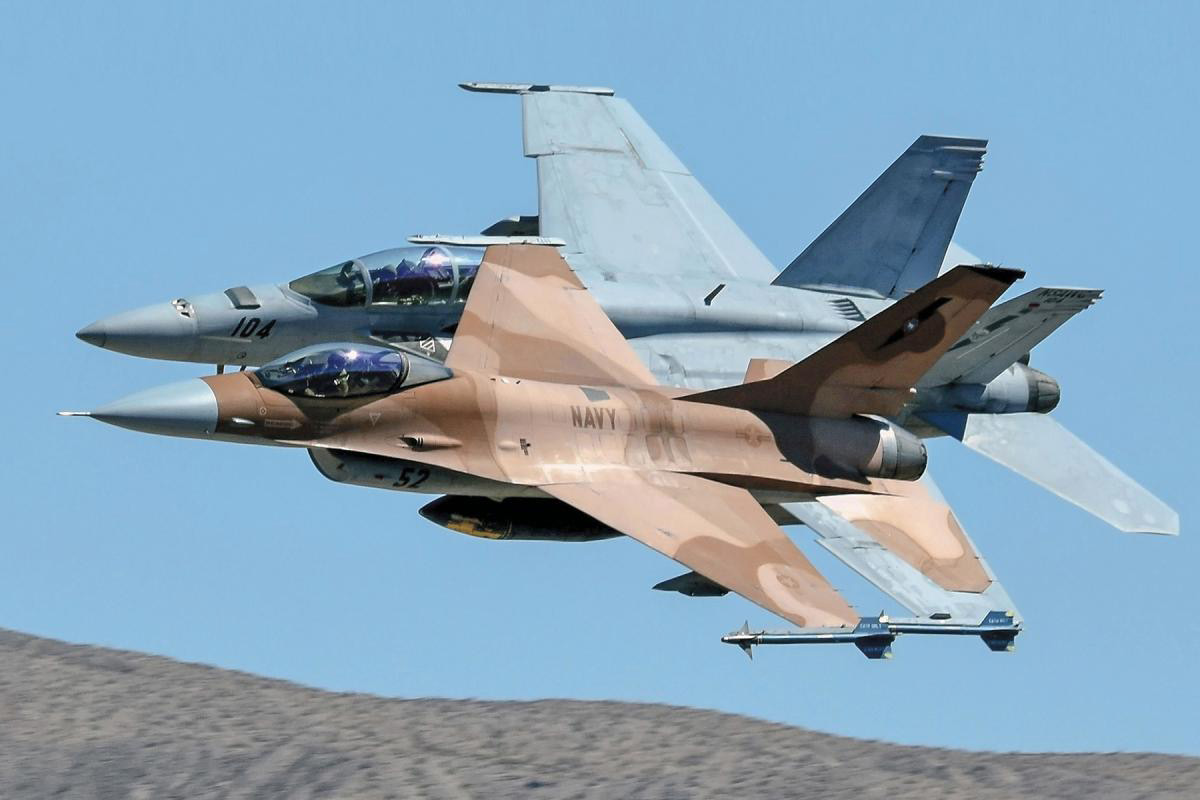In the race for the next generation of air superiority between the United States and the People’s Republic of China (PRC), one thing seems clear: pilots are staying in the cockpit. Despite expectations in the US and the PRC that piloted aircraft would be quickly eclipsed by unmanned aerial vehicles (UAVs), both sides recently hinted that high-end manned fighters will be the centerpiece of their next-generation battle systems for air dominance. These reveals—as well as CNA analysis of PRC writings on related topics—suggest that the US and PRC see manned-unmanned teaming, with UAVs supporting crewed fighters, as the way of high-end air warfare for the foreseeable future.
Competitive Convergence
Details about next-generation fighter jet programs the US and PRC remain a mystery to the public. After President Trump’s March 21 announcement that Boeing will build the US Air Force’s F-47 sixth-generation fighter jet, the DOD distributed several artist renderings of the fighter, the details of which were quickly picked apart in public defense analyst forums. On April 18, however, US Air Force and defense industry officials revealed that the images were deliberately distorted, intended to confuse competitors about the true capabilities of the F-47’s design.
This announcement was preceded by a similarly speculative reveal in the PRC in December 2024, where videos of two advanced, tailless tactical combat aircraft—unofficially dubbed by Western military analysts as the J-50 and JH-XX—circulated on social media. Despite speculation in the PRC and international media that these were sixth-generation prototypes, neither the PRC government nor its military have confirmed this.
While much remains uncertain about the two nations’ next-generation air weapon platforms, Washington’s and Beijing’s teasers do bolster confidence in one basic but critical shared aspect of the competitors’ next-generation air dominance programs: both advanced fighter systems appear to be centered on a manned fighter jet.
This may seem odd to observers of current conflicts in Ukraine and the Red Sea, where small unmanned systems have come to dominate the air domain. Based on observations of the fighting in Ukraine, US military commentators like David Barno and Nora Bensahel have argued that “masses of uncrewed drones have now wrested command of the air away from manned aircraft in the skies above the modern battlefield.” PRC military experts have drawn similar conclusions. CNA has analyzed writings from experts affiliated with the People’s Liberation Army and PRC military industry about Ukraine’s use of UAVs to penetrate Russian airspace; conduct intelligence, surveillance, and reconnaissance; and destroy high-value targets. They argue that the Russia-Ukraine war has demonstrated an emerging prominence for drones in contemporary warfighting.
How do the consecutive reveals of manned sixth-generation jet prototypes in the PRC and US square with the widespread belief in both countries that air warfare is becoming less human-centric and more based on unmanned systems?
PRC Concerns About Unmanned Air Warfare Platform Vulnerabilities
While PRC writings analyzed by CNA suggest that the PRC is investing heavily in military UAVs, drone swarm technology, and the artificial intelligence needed to run them, experts affiliated with the People’s Liberation Army also express concerns about the vulnerabilities of unmanned air warfare platforms.
For example, PRC analysts describe the fragility built into UAV swarm operations due to their dependence on extensive space-based communications and datalink networks that cannot be assured in wartime. An attack on any of these nodes in the intelligent combat system—whether through kinetic means like missiles or non-kinetic means like electronic jamming—can degrade operations. Heightening these concerns, writings in PRC technical journals show that their military research institutes are tracking steady progress on counter-UAV swarm tactics that target these networks.
PRC experts also discuss the unreliability of unmanned system sensing. Their writings highlight how UAV sensors can be obstructed or confused by terrain concealment, smoke screens, and false target dummies—diversions that a human eye could see through.
CNA analysis of articles in Chinese technical journals finds that they identify the tactical inflexibility of autonomous systems as another significant challenge. They argue that due to the inadequate level of autonomous technology in the PRC, unmanned weapons platforms may not be able to respond effectively to novel operational environments, situations, or attacks.
Manned-Unmanned Teaming: The Best of Both Worlds
PRC writings frame UAV cooperation with manned fighters, like the sixth-generation jets under development, as a way to mitigate these challenges while maintaining—if not multiplying—the capabilities that UAVs bring to the fight. Many PRC articles characterize manned-unmanned teaming tactics in air warfare as combining the best of both manned and unmanned capabilities. Where humans have combat experience, intuition, initiative, and the art of command, PRC experts argue that unmanned systems have fewer environmental restrictions, lower cost, no fear, and the ability to close in on a target.
PRC writings analyzed by the China Aerospace Studies Institute describe several manned-unmanned teaming operational concepts for UAVs and manned fighters. In each, the manned fighter is conceived as the command element, sending orders to forward UAVs from outside the enemy’s weapons engagement zone to increase the manned element’s survivability and the unmanned elements’ operational effectiveness. For example, PRC writings describe UAVs “kicking in the door” by undertaking electronic warfare or deception missions against enemy air defenses, clearing a path for the manned fighter to follow up with precision kinetic strikes. In another concept, the manned aircraft commands UAVs to move forward to increase its effective targeting range.
Although the concept of a sixth-generation fighter remains largely theoretical for both the US and PRC, the competitors are accelerating toward a future where manned-unmanned teaming will be a key factor. As the rivalry for air supremacy intensifies, one thing appears certain: for now, pilots still have a job to do.



